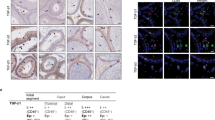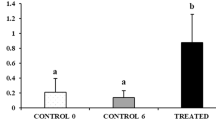Abstract
THERE is evidence that H–Y antigen has a major role in testis differentiation in mammals1–3. Presumably, this antigen is the essential factor for the development of the undifferentiated gonadal anlage into a testis. Antiserum to H-–Y antigen, raised in highly inbred strains of mice and rats, exhibits cross-reactivity with cells derived from non-mammalian vertebrates like birds, amphibians and fish4,5. In these animals, the cross-reaction is strong in the heterogametic sex. This means that in birds with the ZZ/ZW mechanism of sex determination the female types as positive, as also occurs in the toad Xenopus laevis; on the other hand, in the frog genus Rana and the cyprinodont fish Lebistes and Xiphophorus, which have the XX/XY mechanism of sex determination, the male types as positive. This correlation with the heterogametic sex favours the assumption that the cross-reacting antigen ‘H–Y’ or ‘H–W’ in non-mammalian vertebrates has a similar function to that occurring in mammals for the differentiation of the heterogametic gonad, that is, the ovary in ZW, and the testis in XY animals. In contrast to placental mammals, in the other vertebrates it is possible to influence gonadal differentiation by sex steroid hormones (for review, see ref. 6). In the embryonic male (ZZ) bird, application of oestrogens leads to the development of an ovotestis, in amphibians and fish, treatment with steroid hormone of the opposite sex causes complete sex reversal. If H–Y (H–W) is the differentiation antigen for the heterogametic gonad, and if on the other hand sex reversal can be achieved by the steroid hormone of the opposite sex, the question arises whether the hormone acts by way of the H–Y (H–W) antigen. Therefore, we have converted embryonic male chickens using oestrogen to develop an ovotestis, and then tested them for the presence of cross-reactivity with rat anti-H–Y antiserum. We report here that, indeed, the normally antigen-negative testis becomes antigen-positive after hormonal treatment. Thus, the gene for this antigen must be present in the genome of both sexes.
This is a preview of subscription content, access via your institution
Access options
Subscribe to this journal
Receive 51 print issues and online access
$199.00 per year
only $3.90 per issue
Buy this article
- Purchase on Springer Link
- Instant access to full article PDF
Prices may be subject to local taxes which are calculated during checkout
Similar content being viewed by others
References
Wachtel, S. S., Ohno, S., Koo, G. C. & Boyse, E. A. Nature 257, 235–236 (1975).
Ohno, S., Nagai, Y. & Ciccarese, S. Cytogenet. Cell Genet. 20, 351–364 (1978).
Zenzes, M. T., Wolf, U., Günther, E. & Engel, W. Cytogenet. Cell Genet. 20, 365–372 (1978).
Wachtel, S. S., Koo, G. C. & Boyse, E. A. Nature 254, 270–272 (1975).
Müller, U. & Wolf, U. Differentiation (in the press).
Mittwoch, U. Genetics of Sex Differentiation (Academic, New York, 1973).
Akram, H. & Weniger, J.-P. Gen. comp. Endocr. 12, 568–573 (1969).
Müller, U., Aschmoneit, I., Zenzes, M. T. & Wolf, U. Hum. Genet. 43, 151–157 (1978).
Scheid, M., Boyse, E. A., Carswell, E. A. & Old, L. J. J. exp. Med. 135, 938–955 (1972).
Erickson, R. P. Nature 265, 59–61 (1977).
Koo, G. C. et al. Science 198, 940–942 (1977).
Wolf, U. Bull. Swiss Acad. med. Sci. 34, 357–368 (1978).
Author information
Authors and Affiliations
Rights and permissions
About this article
Cite this article
MÜLLER, U., ZENZES, M., WOLF, U. et al. Appearance of H–W (H–Y) antigen in the gonads of oestradiol sex-reversed male chicken embryos. Nature 280, 142–144 (1979). https://doi.org/10.1038/280142a0
Received:
Accepted:
Published:
Issue Date:
DOI: https://doi.org/10.1038/280142a0
This article is cited by
-
H-Y antigens
Human Genetics (1996)
-
Determination of the serological sex-specific (Sxs) antigen (?H-Y antigen?) in birds and mammals using high-titer antisera and a sensitive urease ELISA
Human Genetics (1987)
-
Identification and function of serologically detectable H-Y antigen
Human Genetics (1982)
Comments
By submitting a comment you agree to abide by our Terms and Community Guidelines. If you find something abusive or that does not comply with our terms or guidelines please flag it as inappropriate.



